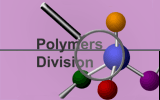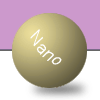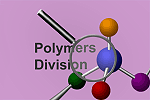| |
High-throughput and combinatorial methods for measuring
the mechanical properties of dental materials
|
| |
Introduction
|
 |
| |
One of the most important factors in the evaluation
of dental materials is the elastic modulus. Whether the material
is a sealant, a polymer composite or a hydrogel, the modulus
helps predict flexibility, adhesion, cell proliferation and
growth, and swelling behavior. Current methods to evaluate the
elastic moduli of these materials include tensile and compressive
tests that are labor-intensive and can only be used to evaluate
one specimen at a time. More efficient testing methods would
permit for rapid screening of dental materials that would be
highly advantageous. Accordingly, the Biomaterials Group is
seeking to apply high-throughput and combinatorial methods to
dental materials
|
| |
Objective
|
 |
| |
| To develop and validate high-throughput/combinatorial methods
for measuring the elastic moduli of dental materials |
| |
Nanomechanics
|
 |
| |
SIEBIMM = strain-induced elastic buckling instability for
mechanical measurements
A thin film of the material is prepared through spin-coating
For crosslinked materials, sample is photo-polymerized with
visible light for 10 minutes under N2
Film is transferred to a soft polymer substrate in water
A small strain is applied to the substrate, causing the thin
film to buckle
The periodicity of the buckling can by measured by light scattering
and used to calculate the elastic modulus of the polymer film,
or, in the case of “reverse SIEBIMM,” the soft polymer
substrate
|
ADVANTAGES: Can have several films on one substrate; may work
on gradient films; measurements only take a matter of seconds;
process can potentially be automated
DISADVANTAGES: Process becomes complicated for crosslinked films;
actual relationship between thin film properties and bulk properties
uncertain
|
 |
| |
Nanoindentation
|
 |
A film of the monomer/polymer is prepared by spreading the
monomer or polymer onto glass slides
For crosslinked materials, a monomer film is sandwiched between
two glass slides and photo-polymerized with visible light for
1 minute/side
Nanoindentation (MTS NanoXP) is employed to measure elastic
moduli of the resultant films
|
ADVANTAGES: Films can have gradients and process is automated
DISADVANTAGES: Measurements are slow; viscoelastic materials
present complications
|

|
| |
Preliminary results and future work
|
 |
| |
|
Sample
composition
by mass fraction
|
Modulus (GPa)
Traditional
3-point bend
|
Modulus (GPa)
Nanoindentation
Continuous stiffness |
Modulus (GPa)
Nanoindentation
Unloading |
70% TEGDMA
30 % Bis-GMA
|
2.04 ± 0.15
|
3.24 ± 0.02
|
2.55 ± 0.17
|
50 % TEGDMA
50 % Bis-GMA
|
2.16 ± 0.27
|
4.33 ± 0.04
|
3.21 ± 0.02
|
30 % TEGDMA
70 % Bis-GMA
|
2.23 ± 0.32
|
4.50 ± 0.14
|
4.54 ± 0.17
|
|
|
Sample
polymer
|
Modulus (GPa)
3-point bend
|
Modulus (GPa)
SIEBIMM method
|
|
PMMA
|
2.5 ± 0.1
|
2.2 ± 0.3
|
|
Results:
Nanoindentation is easily applied to both linear and crosslinked
polymer films, but validity of the method for viscoelastic materials
remains uncertain
SIEBIMM works well for linear films that can be directly spin-coated,
but brittle, crosslinked materials present complications
|
Future Work:
Challenge: Can we apply SIEBIMM to crosslinked dental
materials? Preparation issues persist
Next: Hydrogels? Reverse-SIEBIMM may work well on these systems
|
| |
| |
NIST Contributors
|
 |
Elizabeth A. Wilder
Peter Votruba-Drzal
Christopher M. Stafford
Sheng Lin-Gibson
Joseph M. Antonucci
Michael J. Fasolka
|
| |
| |
Acknowledgements:
|
 |
National Research Council
NIST/NIDCR Interagency Agreement Y1-DE-1021-04
|
| |
| |












